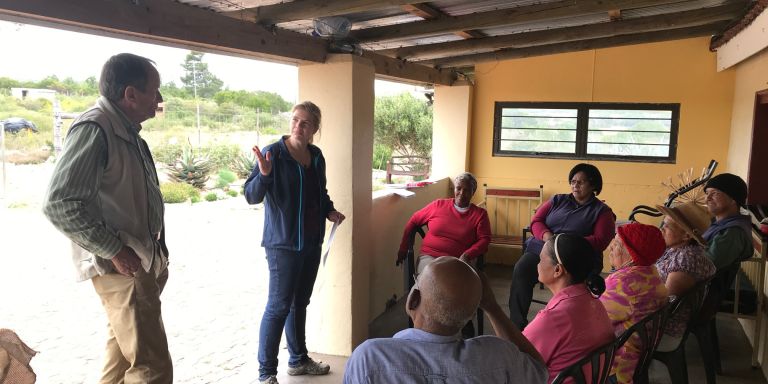
Carina Schlebusch
PhD in Human Genetics
Wallenberg Academy Fellow, Prolongation grant 2024
Institution:
Uppsala University
Research field:
How agriculture spread across the African continent


Wallenberg Academy Fellow, Prolongation grant 2024
Institution:
Uppsala University
Research field:
How agriculture spread across the African continent
Around 10,000 years ago, a warming climate resulted in rising sizes of human populations around the world, not least in Africa. Both the environment and the human way of life were transformed when hunter-gatherers began to farm the land and keep domesticated animals.
The new way of life spread throughout continents, but researchers have not been able to agree how it happened. Geneticist Carina Schlebusch at Uppsala University is analyzing bone samples from prehistoric farmers and herders to ascertain where they came from – and where they ended up.
“Genetics is a fantastic tool for exploring human history,” she says.
Bantu-speaking farmers took the art of cultivation with them when they left West Africa and migrated south of the equator around four to five thousand years ago. Their migration is considered to be one of the most extensive expansions of agriculture ever.
Today, over 350 million Bantu-speaking people live in western Central Africa, East Africa and South Africa. Many of them make up the majority of the population in their home countries. Agriculture is the most important economic activity.
But did the Bantu people really take the know-how with them – or was it merely the art of cultivation that spread southward? There is also the question of the route taken by farmers past the Central African rain forests. Language researchers and archeologists have conflicting opinions regarding the precise routes of migration.
“From an historical viewpoint, it’s important to find out where people come from and how they migrated over time,” Schlebusch opines.
Being chosen as a Wallenberg Academy Fellow gives her the opportunity to map the DNA of 150 prehistoric humans from different times and regions south of the Sahara. The results will be compared with other prehistoric individuals whose DNA is already known.
“When we analyze DNA in bones from archaeological excavations, we’ll be able to say where farmers and herders originated, and when they reached different parts of Africa,” she explains.
Her research team of eight people is taking part in the work, and some 30 archaeologists and geneticists throughout Africa and Europe are collaborating on the project, among others, helping to seek permission to use prehistoric finds from universities and museums. Schlebusch and her team visited many collections in Africa before the pandemic, and was able to bring small fragments of bone back to Uppsala.
“It’s easier to sample material on location under supervision of the curator. The permitting procedure is more complicated to ask for the export of material from Africa that must later be returned.”
So far the researchers have sequenced collections from several sub-Saharan and North African countries. Availability of suitable remains from which DNA can be extracted varies from country to country. In West Africa, where the climate is hot and humid, very few human remains have been preserved.
To find out more about how people have traveled throughout the continent, the researchers also examine the DNA of people alive today.
There are not very many human remains that contain enough DNA to analyze, and their quality is not particularly good either. Sometimes we have to redo the sequencing over and over again. Present-day samples are of much better quality, and are also more plentiful.
When collecting samples of blood or saliva from modern-day Africans, the team sometimes collaborates with anthropologists who are aware of written as well as unwritten rules for different communities.
Schlebusch grew up in South Africa and received a master’s in human genetics following an undergraduate degree in molecular biology at the University of Pretoria. Her doctoral thesis, which she wrote at the University of the Witwatersrand, Johannesburg, was on the subject of genetic variation and population history of hunters and herders inhabiting southern Africa before the Bantu people migrated there.
After receiving her PhD in 2010, she pursued a postdoc in Sweden, and was eventually able to set up her own research team.
“I have received one of the largest grants I could have hoped for in Sweden. It’s a dream come true. I now have the resources to conduct studies of both recent and prehistoric DNA from farmers and herders in southern Africa.”
Schlebusch considers that researching in Sweden offers major advantages, such as better funding opportunities. There is also a better balance between research and teaching in Sweden.
At present Schlebusch spends 20 percent of her time teaching. Among other things, she teaches an evening course in human evolution.
“I enjoy talking about my subject. At first I wanted to be an archaeologist but was also very interested in biological sciences. I have the best of both worlds now, in being able to use genetics to do research into the origins of humankind.”
Text Carin Mannberg-Zackari
Translation Maxwell Arding
Photo Mário Vicente, Michael de Jongh, Marcus Marcetic